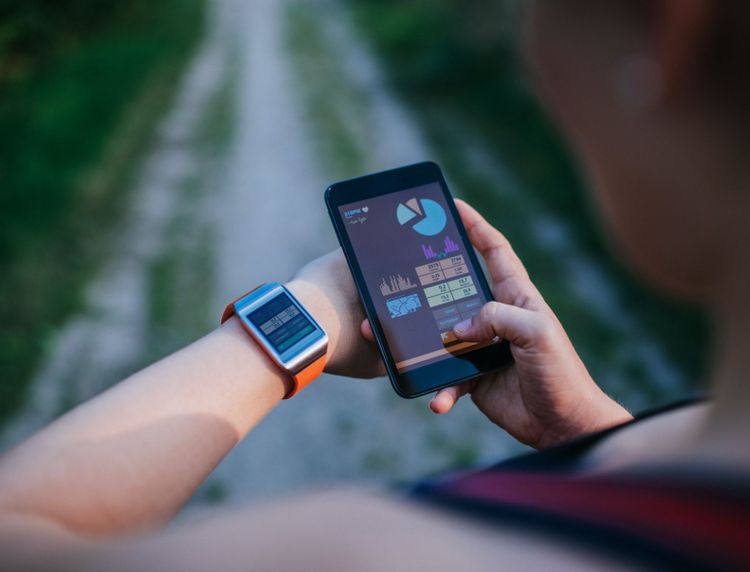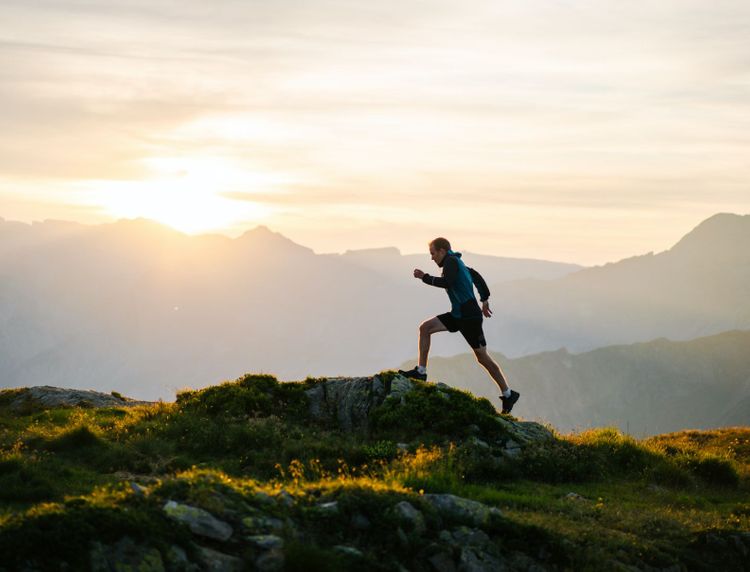Health Benefits of Adho Mukha Svanasana (Downward Dog Pose)
Engaging in yoga contributes to the well-being of your mind, body, and soul. Adho Mukha Svanasana is effective in relieving chronic pain in the shoulders, arms, and back. It is also commonly known as the downward dog pose. Despite its simple appearance, this yogic posture requires significant strength to perform correctly.
Adho Mukha Svanasana is the eighth yoga pose in the well-known sequence of Surya Namaskar, which consists of twelve asanas. The significant health benefits of the downward dog pose include enhanced blood circulation and the stretching of muscles in the spine, arms, shoulders, legs, and inner thighs.
Stay glued to this easy-to-follow guide to learn about the downward dog pose, including its advantages and simple steps to do it correctly.
Share this article
List of Content
- What Is a Downward Dog Pose or Adho Mukha Svanasana?
- Adho Mukha Svanasana Steps
- Benefits of Adho Mukha Svanasana?
- Tips to Practise Adho Mukha Svanasana
- Conclusion
- FAQS
What Is a Downward Dog Pose or Adho Mukha Svanasana?
Adho Mukha Svanasana is a downward dog yoga posture or a bent-head dog pose. It is a forward-bent position that enhances your blood circulation.
Adho Mukha Svanasana is a name derived from Sanskrit. 'Adho' refers to downward, 'Mukha' means face, and 'Svan' means dog to form the name Adho Mukha Svanasana collectively.
The Adho Mukha Svanasana steps enable your entire body to stretch on all four limbs. Engaging in the downward dog pose aids in enhancing physical balance and flexibility through stretching and strengthening the body.
However, it is crucial to practise with care, especially if you have stiff hamstrings or shoulders. Seeking guidance from a trainer is recommended, especially for beginners.
Adho Mukha Svanasana Steps
You can follow the following Step-by-Step guide to perform the Adho Mukha Svanasana effectively.
Step 1: First, kneel on your hands and knees, ensuring that your wrists are aligned beneath your shoulders and your knees are aligned under your hips
Step 2: Extend your arms as you uncurl your toes, then raise your hips and gently stretch your legs.
Step 3: Open your fingers wide and use the palms of your hands to push down on the floor, applying pressure to your palms and fingers.
Step 4: Broaden the collar bones by rotating the upper arms towards the outside.
Step 5: Let your head hang and gradually move your shoulder blades towards your hips and away from your ears
Step 6: Now, engage the quadriceps and remove the body's burden from your arms. The pose you attain post this is the resting pose.
Step 7: Lift your tail, point your heels downward, and gently turn your thighs inward.
Step 8: Ensure the distance between your hands and feet remains consistent in both transitional and resting poses.
Step 9: Now, gently exhale while bending your knees, enabling yourself to release the posture and attain your original position.
Benefits of Adho Mukha Svanasana?
Practising Adho Mukha Svanasana regularly offers a range of health benefits, including the following.
Tones the lower abdomen
One of the primary reasons for Adho Mukha Svanasana benefits is that it targets the core muscles of your body. The downward dog pose helps to tone the lower abdomen by indulging the core body muscles. It also helps in fat loss, especially from the lower abdominal region. Furthermore, as the posture uses the strength of your limbs to stretch the spine, it helps relieve chronic back aches.
Enhances blood circulation
The downward dog pose places your heart above the head in an inverted 'V' position, further stimulating the blood flow to the head. Improved blood circulation leads to better focus and energy, quickly relieving shoulder pain and neck stiffness.
Strengthens your bones
Yet another one of the downward dog pose benefits is that it strengthens your bones, providing a stronger core for your body. The Adho Mukha Svanasana is a weight-bearing yogic posture that helps you build stronger bones, especially for the limbs.
Regular practice of this posture will help you develop a stronger upper body and improve your overall balance. Therefore, it becomes easy to manage osteoporosis. Additionally, it also gently works on the betterment of your shoulders.
Stretches the muscles on the backside of your legs
Besides stretching the spine, Adho Mukha Svanasana also stretches your calf muscles and hamstrings. The eventual stretching of the leg muscles helps them open, relieving any pain in the back muscles of the legs.
Strengthens your arms
Adho Mukha Svanasana helps strengthen your entire body, especially your arms. Regularly performing the downward dog pose, with the significant weight on the arms, tones and strengthens the arm muscles.
Pressing your palms against the yoga mat and engaging the arm muscles contributes to building strength and achieving toned arms.
Stretches your back
The downward dog pose stretches your body's backside, easing the chronic back pain. As the spine stretches, it improves the oxygen supply to the body parts. If staying strong is your goal, you must practise this pose regularly.
Improves body posture
A sedentary lifestyle can negatively impact your posture, but practising Adho Mukha Svanasana can help improve slumped posture. This asana opens your shoulders, lengthens your spine, and eases back and neck pain.
Other benefits
Practising Adho Mukha Svanasana enhances oxygenated blood circulation, keeping colds and coughs at bay.
It enhances blood circulation to the head, providing nutrients to the hair and promoting health and nourishment.
It helps fight acidity, indigestion, and gastric issues.
It positively influences the pituitary gland, helping regulate insulin levels.
It aids in curing swollen veins, also known as varicose veins.
It helps enhance your memory and retain power.
This position strengthens the smaller tissues in your feet, like the plantar fascia.
This pose increases blood flow to your brain and face, improving skin texture for a healthy glow.
It is also beneficial for those with panic attacks.
Tips to Practise Adho Mukha Svanasana
Correctly performing downward dog yoga demands a lot of patience and practice. Therefore, consulting and performing it on the premises of a trained professional can be advantageous. However, follow the following time while practising the Adho Mukha Svanasana.
Begin with smaller movements: </ As a beginner, you should start with smaller movements to make practising the posture easier and more accessible. For instance, you may use props like blankets or yoga blocks to support your hands. After a few days of practice, performing the pose without external support will become easy.
Modify the heel placement: </ If extending your legs while maintaining a straight back is challenging, consider adjusting the placement of your heels for ease. This relieves you as you can smoothly lift your heels off the floor. When you aim to stretch more, attempt to return your heels to the floor.
Use a chair: </ For limited flexibility, use a chair to support your arms and achieve a 'V' position. Gently move your feet back until you sense the stretch.
Avoid locking your knees: </ When extending your legs in the pose, avoid overstretching your knees to prevent locking. This could strain joints and lead to injury. Keep your legs straight with a slight knee bend for balance and stability.
Keep the back straight: </ Downward dog pose in yoga supports your back. To maximise benefits, refrain from bending; tilt your pelvis forward to maintain a straight spine.
Use yoga ropes to extend: </ Use extension ropes in a gym or yoga studio for assistance in this yoga pose. These ropes affixed to the walls, aid in stretching during specific poses.
Conclusion
Practising yoga regularly helps keep your body fit and mind calm. Most yoga postures help stretch your body, improving flexibility and muscle pains. Even though yoga poses benefits slowly, its after-effects are significant and pleasing.
To boost your yoga benefits, you can take training from advanced trainers and also combine your workout regime with healthy diets and habits. With an overall healthy lifestyle, you can lead a disease-free life with your loved ones.
But, leading a healthy life with regular workouts and healthy eating habits is not enough alone. You should invest in a suitable health insurance policy to enhance your safety net.
A health insurance policy promotes a peaceful lifestyle and provides financial coverage during medical emergencies, preventing financial strain. Various critical illness insurance plans now cover various illnesses, ensuring comprehensive protection.
Tata AIG is a one-solution platform to compare health insurance plans and finalise one with the utmost convenience and expert assistance. Here, you can buy health insurance online and renew it within minutes while sitting in the comfort of your home. With a quick comparison and a few clicks, you can safeguard your future with the most affordable premiums.
FAQS
How long should I hold the Adho Mukha Svanasana?
As a beginner, you should hold the Adho Mukha Svanasana for about five to six breaths. However, if you feel muscles straining too much, release the pose immediately.
What should I do if I experience wrist pain while performing the Adho Mukha Svanasana?
If you experience wrist pain while performing Adho Mukha Svanasana, you can use cushions, yoga blocks, blankets, or foam wedges to support your hands. This will relieve some of the pressure on your wrist and comfort you.
Share this article
Latest from our blogs

15 terms you must know before buying health insurance
We have listed all 15 terms a health insurance buyer should ...
Read More
How Much Health Insurance Do You Need?
While more and more people are getting insurance for things ...
Read More
4 simple steps to claim MediClaim in India
Check that all the documents contain required information li...
Read More